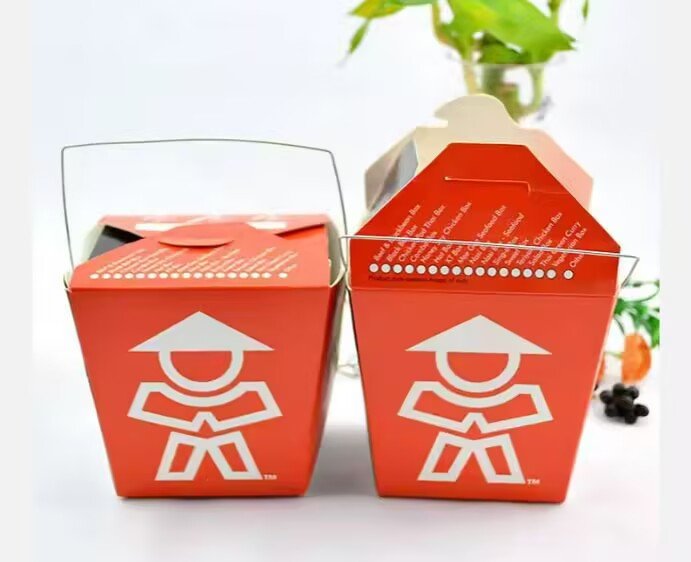Plastic ban and solutions in European supermarkets 2025 (3)
Ganyuan
2025 年 4 月 28 日

In today’s world, where the global logistics system is rapidly restructuring, the packaging industry is undergoing an unprecedented environmental revolution. When Amazon announced its plan to completely phase out plastic packaging by 2025, and when the EU carbon tariff officially included packaging materials in its calculation system, this silent industrial transformation has evolved into a critical battle that determines corporate international competitiveness. As a Chinese manufacturer with twelve years of experience in eco-friendly packaging, we have witnessed the industrial leap of paper packaging containers from an alternative option to a strategic choice. The breakthrough application of bamboo pulp materials is providing a smart solution from the East for this green revolution.
I. Material Revolution: The ecological code of bamboo fiber
In the raw material spectrum of traditional paper packaging, wood pulp and recycled waste paper pulp have long dominated. However, when we delved into the bamboo forests of Yunnan, we discovered an ecological miracle: each hectare of bamboo forest can sequester 24 tons of carbon annually, which opened up new directions for material innovation. The unique hollow structure of bamboo fibers endows them with superior cushioning properties compared to ordinary pulp. —— Laboratory data shows that bamboo pulp board with the same weight has an increased compressive strength of 18%, explaining why IKEA’s latest home packaging boxes prominently feature the “bamboo-based reinforced” label.
More noteworthy is the closed-loop attribute of bamboo pulp materials. From the bamboo forest cultivation bases in Anji, Zhejiang to the intelligent pulping and board production lines in Guangdong, we have established a raw material ecosystem with a radius of 300 kilometers. This “morning departure, evening arrival” supply chain model not only reduces transportation carbon emissions by 62%, but also, through the bamboo farmer cooperative mechanism, increases income for mountainous area households by 2400 yuan per ton of bamboo procurement. When customers inquire about the product’s carbon footprint, we can accurately provide data from the entire process: the lifecycle carbon emission per square meter of bamboo pulp board is only 3.2 kg, less than one-fifth that of plastic products.
2. Structural innovation: When Oriental wisdom meets modern design
Under the spotlight at the Munich Packaging Exhibition, our foldable bamboo pulp pallets have caught the collective attention of logistics giants. This design, inspired by mortise-and-tenon joints, reduces the volume of a standard 1200x800mm pallet by 70% when folded, directly rewriting the loading equation for shipping containers. DHL’s test report shows that with the new structure, the single-container transport capacity increases by 3.2 times, and the overall logistics cost per pallet decreases by $1.80.
In response to the special needs of fresh cold chain logistics, the R&D team drew inspiration from the Song Dynasty oil-paper umbrella technique. The water-resistant and moisture-proof function achieved through micro-porous coating technology ensures that the cardboard boxes maintain their compressive strength even in an 85% humidity environment. When Norwegian salmon exporters conducted a 72-hour test at-25℃, the strength degradation rate of the bamboo pulp packaging box was controlled within 9%, a figure that even outperforms some EPS insulated boxes. Currently, we are collaborating with the Materials Laboratory at the University of Cambridge to develop nanoscale bamboo fiber alignment technology, which is expected to further increase material utilization by 40%.

3. Practical application in cold chain logistics
3.1 Frozen food transportation
Case study: A Japanese seafood company reduced packaging waste by “62%” after switching to bamboo pulp trays.
-Core advantages: no odor absorption (better than plastic).
3.2 Pharmaceutical and vaccine transportation
-Temperature stability: suitable for “-70℃” (compatible with dry ice environment).
-Sterile: natural antibacterial (reduces the risk of contamination).
3.3 E-commerce and fresh distribution
-Consumer preference: “Brand repurchase rate increased by 28%” for brands using compostable packaging (Nielsen data, 2023).
-Cost savings: lighter than plastic and lower shipping costs.
3. Global chess: decoding the green code of the international market
On the eve of the EU PPWR regulation’s imminent implementation, the bamboo pulp gift box we have customized for Spanish wine merchants is rewriting the rules of high-end packaging. The combination of laser-engraved bamboo textures and biodegradable soy ink reduces packaging costs by 35% while boosting shelf appeal by 200%. Interestingly, the recycling instructions for this batch of packaging are marked in Chinese, Cyrillic, and Arabic ———a vivid testament to the global green supply chain.
The data from the North American market is more revealing: Walmart’s supplier platform shows that inquiries for FSC-certified bamboo pulp packaging have increased by 340% year-over-year. To address this, we have specifically developed an indoor composting solution that meets ASTM D5338 standards. Customers can simply scan the QR code on the packaging to track the degradation progress of the material under specific temperature and humidity conditions. This transparent traceability mechanism is helping to alleviate overseas buyers’ concerns about “greenwashing” risks.
4. Future Equation: Green decoupling of intelligent manufacturing
Stepping into Suzhou’s smart factory, robotic arms are delivering bamboo pulp molded products to the visual inspection system. This AI quality inspection platform, independently developed by us, can complete the scanning of 128 quality points in just 0.8 seconds, keeping the product defect rate below 0.12‰. More importantly, the MES system tracks not only production efficiency but also the carbon reduction equivalent per kilowatt-hour of energy consumption —— this algorithm will soon open data ports to strategic clients.
Innovations at the equipment level are even more disruptive: the microwave hot pressing machine we co-developed with Huazhong University of Science and Technology has reduced the traditional 20-minute hot pressing cycle to just 4 minutes. This instant steam explosion technology reduces process wastewater by 89%, and the water quality meets agricultural irrigation standards. When Tesla’s supply chain team visited the factory, they paid particular attention to the patent layout of this system, which may herald a packaging revolution in the new energy vehicle sector.
Standing at the threshold of industrial transformation, paper packaging containers have transcended their simple physical protective function to become a tangible carrier of corporate ESG strategies. From the carbon reduction commitments of Southeast Asian e-commerce platforms to the green customs clearance plans of the African Free Trade Area, China’s bamboo pulp packaging solutions are redrawing the environmental coordinates of global trade. The next time you receive a package printed with bamboo grain patterns, it is not just a protective shell for the product; it is also a solemn commitment from an industry to the future of our planet.


